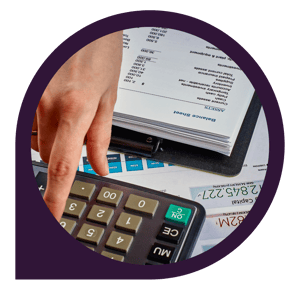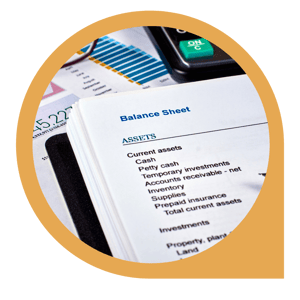Written By: MB Group
A balance sheet is basically a picture of exactly where a business stands at any given moment in time. This paper takes into account what a company has and what it owes to get an idea of whether the company is thriving, in trouble, or failing. Smaller businesses with one owner normally create a balance sheet once a year. as part of their bookkeeping. For larger companies that are publicly owned, a quarterly schedule is considered more appropriate.

A balance sheet includes everything that a company owns, everything it owes. It also includes any shareholder's equity. The shareholder's equity is the stock that is owned by the company's investors or employees and is what is left over after you take into account both assets and liabilities.
It is important that you include both current and non-current items in your statement. A general rule of thumb is that an item is current if it is expected to be turned into cash or paid out within a year. All other assets and liabilities are considered non-current. The standard formula for a balance sheet is:
Assets=Liabilities + Shareholder's Equity
As an alternative, the calculation can be:
Shareholder's Equity=Assets-Liabilities
Let's see how to calculate the balance sheet.
Knowing how to calculate your balance sheet, and knowing what falls into each category, is the first step in getting an accurate picture. Before you begin, take stock of the following:
These are anything the company owns that can be sold for cash. Current assets can include cash on hand, bank accounts, short-term marketable securities, inventory, and any money owed to the company. Non-current assets include long-term marketable securities, property, goodwill, and equipment minus any depreciation.
List all your assets on separate lines. This will make it easier to pinpoint where your strengths and weaknesses are. Subtotal the current assets and then subtotal the non-current ones. Next, add both totals together.
Now take a look at your liabilities. Start with the current ones, which include any money owed for accounts, accrued expenses, the current portion of long-term debt (such as loan payments due), and deferred revenue. Get a subtotal of the individually listed items. Next, the non-current liabilities need to be individually listed and subtotaled. These include deferred revenue, long-term lease obligations, and long-term debt.
Once you get the subtotal for these, add it to the subtotal of the current liabilities for a grand total in this category.
Calculating shareholder equity is simple if you have only one or two owners. If the company is publicly-owned, you will need to calculate all the types of stock. This can include common stock, preferred stock, treasury stock, and retained earnings. Not all businesses have all of these, but each should get its own line on the balance sheet.
Now you have three totals. Put the numbers into the formula above and see if everything equals as it should. If all is well, you are finished. If not, it is time to check your figures and then keep exploring until you find where the inconsistency lies.
 The Importance of Balance Sheets
The Importance of Balance SheetsOnce your balance sheet is finished, you can't just file it away. It is an important document that can help tell you the state of your business. It can also show you where you need to improve. The balance sheet helps future investors understand if this is a good investment.
It allows those in charge to understand what is working and what isn't and this can help them reorganize organizational strategy. Employees can gain knowledge from the balance sheet that will help them better reach organizational goals by adjusting processes involved in production, sales, and other departments.
Analyzing your balance sheet is fairly easy. Using the following steps, you can get a great overall picture of where your company currently stands.
If you're still in need of guidance regarding your balance sheets, don't hesitate to reach out to our team of qualified CPAs. Contact our team to get started.
You May Also Like:
Tags: Accounting Small Business
We get it: as a business owner, you have a lot on your plate. From managing the day-to-day operations, to marketing, to tax planning, to a litany of other tasks—business owners are often stretched...
Read MoreAt the core of every successful small business is a great product, hard work, and accurate bookkeeping. While it may not be the most glamorous aspect of entrepreneurship, proper bookkeeping is key to...
Read MoreThe importance of manufacturing in any nation cannot be understated. This is why different states offer opportunities for tax exemptions for industrial processing. Manufacturers are therefore able to...
Read More